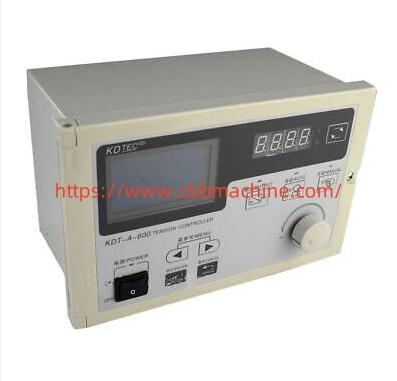In modern industrial automation systems, maintaining process stability and material consistency has become increasingly crucial—and that's where a Tension Controller plays a vital role in ensuring precision. Whether managing web tension in packaging lines or regulating the unwinding speed of delicate films, this device enhances the efficiency and quality of production by continuously monitoring and adjusting tension forces in real time.
Tension regulation is especially significant in operations involving continuous material rolls such as paper, film, textile, foil, and various composites. Inconsistent tension can cause material wrinkling, stretching, tearing, or misalignment—all of which lead to reduced output quality and increased waste. By integrating a tension control system, operators can maintain optimal force levels across different machine sections and process stages, ensuring uniform tension and reliable performance.
There are several types of tension control methods, such as open-loop and closed-loop systems. Open-loop controllers rely on pre-set parameters and sensor inputs like diameter or speed, making them suitable for processes with consistent material properties. Closed-loop systems, on the other hand, use feedback from load cells or dancer rollers to adjust tension dynamically. These are ideal for applications requiring high precision, such as in medical tape manufacturing or printed electronics.
Mechanical brakes, pneumatic clutches, or servo motors are often integrated into tension control systems, depending on the complexity and speed requirements of the production line. The controller interprets sensor data and modulates these devices to keep the tension within the desired range. Advanced digital controllers even feature touchscreen interfaces, auto-tuning capabilities, and multiple input/output options to support smart factory integration and predictive maintenance.
Proper selection and installation of a tension controller require understanding the material behavior, line speed, and application environment. For instance, stretchable or laminated materials may demand more sensitive feedback loops to prevent deformation. Furthermore, the controller's responsiveness and algorithm speed also affect how quickly the system can react to disturbances, such as roll changes or web acceleration.
Regular calibration, maintenance, and system diagnostics are essential to keeping the controller functioning optimally. In many industries, downtime due to improper tension can be costly, both financially and in terms of lost productivity. That's why more companies are investing in robust tension control systems with digital displays, real-time monitoring, and remote control capabilities.
As manufacturing processes evolve toward more automation and smart production, the demand for intelligent tension control systems continues to rise. Integrating a well-configured tension controller not only improves product quality but also contributes to energy efficiency and reduced material waste—both key goals in sustainable manufacturing.
To explore different types and applications of tension control systems, visit https://www.cbbmachine.com/news/industry-news/tension-controller-types-importance-applications-and-more.html

